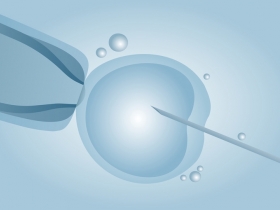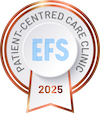Which is the best IVF Protocol for you?
If you have been considering an IVF treatment, you have probably read about the various procedures it comprises. As you know, the GYNEM fertility clinic specializes in helping you conceive and carry to birth. And on our website, you can find answers to a lot of your questions related to the IVF process.
This article will discuss in more detail the different protocols that may be followed during the in-vitro treatment.
What is an IVF protocol?
The term "IVF protocol" refers to the specific treatment plan or regimen patients will be following during an in vitro fertilization (IVF) procedure. There are various IVF protocols, and your fertility specialist will choose the one for you according to your individual patient characteristics.
The main goal of any IVF protocol is to stimulate your ovaries to produce multiple mature eggs, retrieve those eggs, fertilize them with sperm in the laboratory, and then transfer one or more viable embryos back into your uterus for an IVF implantation.

The most common types of IVF protocols followed today are:
- Long Protocol (GnRH agonist protocol) : If your doctor decides that this is the best protocol for you, you will be prescribed a GnRH agonist medication (Gonadotropin-releasing hormone) at the start of your menstrual cycle to suppress natural hormone production. This down-regulation phase usually lasts about 2 weeks. After that, you will begin ovarian stimulation using gonadotropin medications to encourage multiple follicle growth. This protocol is often used for women with regular menstrual cycles. Some studies [1,2] suggest that this type of protocol has proven to be the most effective in women over 35 years of age so far.
- Short Protocol (GnRH antagonist protocol) : For patients who follow this protocol, ovarian stimulation with gonadotropins begins early in the menstrual cycle, typically around day 2 or 3, without prior suppression with GnRH agonists. GnRH antagonist medications are introduced later in the stimulation phase to prevent premature ovulation. This protocol is shorter in duration compared to the long protocol.
- Mild Stimulation Protocol : This is a gentler and milder approach to ovarian stimulation, using lower doses of medications to produce fewer but potentially higher-quality eggs. It is often used for women who are at risk of overstimulation or who have a history of responding poorly to other protocols. Similarly to the short protocol, the mild stimulation one takes less time and uses less gonadotropin, a hormone normally produced by the pituitary gland which stimulates the ovaries to produce a "follicle," containing an egg, and to release the egg from the ovary.
- Natural Cycle IVF : This approach involves monitoring the woman's natural menstrual cycle and retrieving the one egg that is naturally produced without the use of ovarian stimulation. It is suitable for certain specific cases, but with this method, typically, a lower number of eggs are retrieved compared to stimulated cycles.
- Frozen Embryo Transfer (FET) Protocol : In this protocol, embryos created during previous IVF cycles are cryopreserved (frozen) and later thawed for transfer in a subsequent cycle, typically after the woman's endometrial lining has been prepared with hormones.
The IVF protocol is typically determined after thorough evaluation and consultation with a fertility specialist. In order for our specialists to design the most suitable protocol for your case, they will take into account your age, your medical history, information about your ovarian reserve, and any previous IVF treatments. The specific medications, dosages, and timing of the protocol are then going to be tailored to your particular needs. The goal is to maximize the chances of successful fertilization and implantation while minimizing the risk of complications.
Sources:
- Shrestha, D., La, X., & Feng, H. L. (2015). Comparison of different stimulation protocols used in in vitro fertilization: a review. PubMed, 3(10), 137. https://doi.org/10.3978/j.issn.2305-5839.2015.04.09
- Telli, P., Bozkurt, M., Karabacak, O., Erdem, A., Erdem, M., & Oktem, M. (2013). What is the best stimulation protocol for patients over 35 years old? Fertility and Sterility, 100(3), S279. https://doi.org/10.1016/j.fertnstert.2013.07.1156






